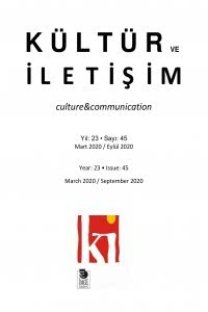Iconic Architecture as a Site of the Production of Meaning within the Framework of the Relationship between Urban Space and Identity
Iconic Architecture as a Site of the Production of Meaning within the Framework of the Relationship between Urban Space and Identity
This study will focus on the examples of iconic architecture, which assume a significant place within urban memory, in the context of the relationship between urban space and identity. To this end, the role such structures play in creating a meaning for the urban space will be discussed with a specific focus on Ankara. The starting point of the study is the effort of Ankara Metropolitan Municipality with a view to creating a new identity for the city, a process that began in 2005 with the replacement of the municipality’s logo based on the Hittite Sun, which had been in use for 32 years and which had come to symbolize Ankara. The construction of the City Doors last year served as the most recent examples of this process. In this context, the architectural qualities of the city associated with the proclamation of the Republic and the ideology that they represent are wiped out and/or trivialized. A new urban history, on the other hand, is being written through new architectural elements based on Seljukians. This transformation is a manifestation of the dominant ideology within the scope of urban policies, a similar policy that had been undertaken by the early Republic though with different tendencies. Especially in the first twenty years of the Republican period, attempts were made to shape Ankara with a pragmatist and minimal architectural imagination, the qualities that were regarded worthy of a modern and Westernized nation state. The study focuses on these two construction processes with a particular emphasis on the transformed aspects of the urban identity in parallel with the changing ideology. The important role that the iconic architecture plays in this framework will also be discussed. Central to this study are the questions including, “What are the constitutive elements of the urban identity in Ankara?” and “Is it possible to design a new identity for a city through an attempt which is disconnected with the historical and cultural background, reductionist and peremptory. Based on this framework, the study problematizes the meaning of Ankara Doors in terms of urban memory and culture, while it also touches upon the dynamics of the relationship between urban constructs and urban identity. This study has been undertaken with a descriptive analysis approach and the meaning of Ankara Doors, which are examples of iconic architecture, has been discussed within the theoretical and historical framework constituted through a literature survey.
